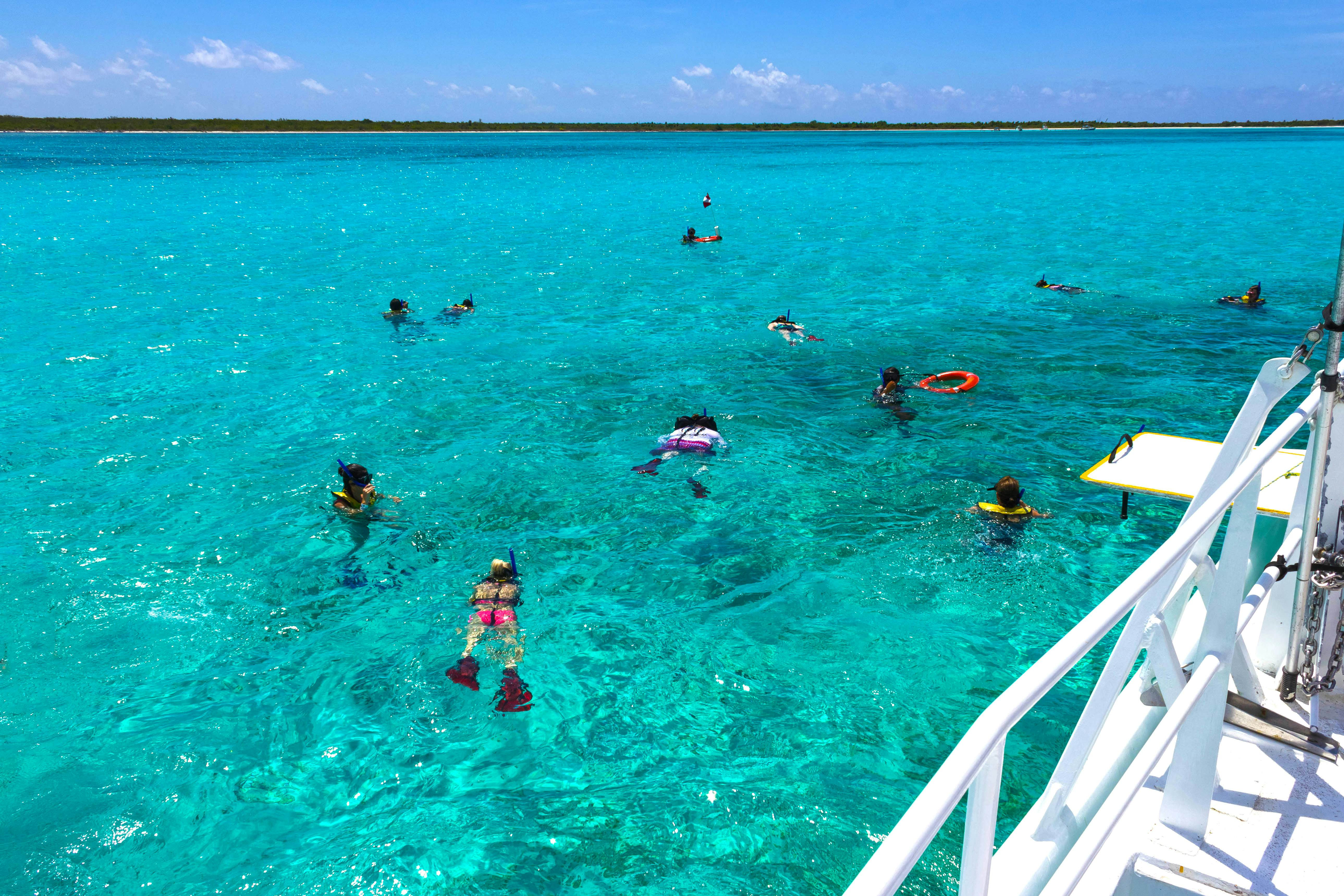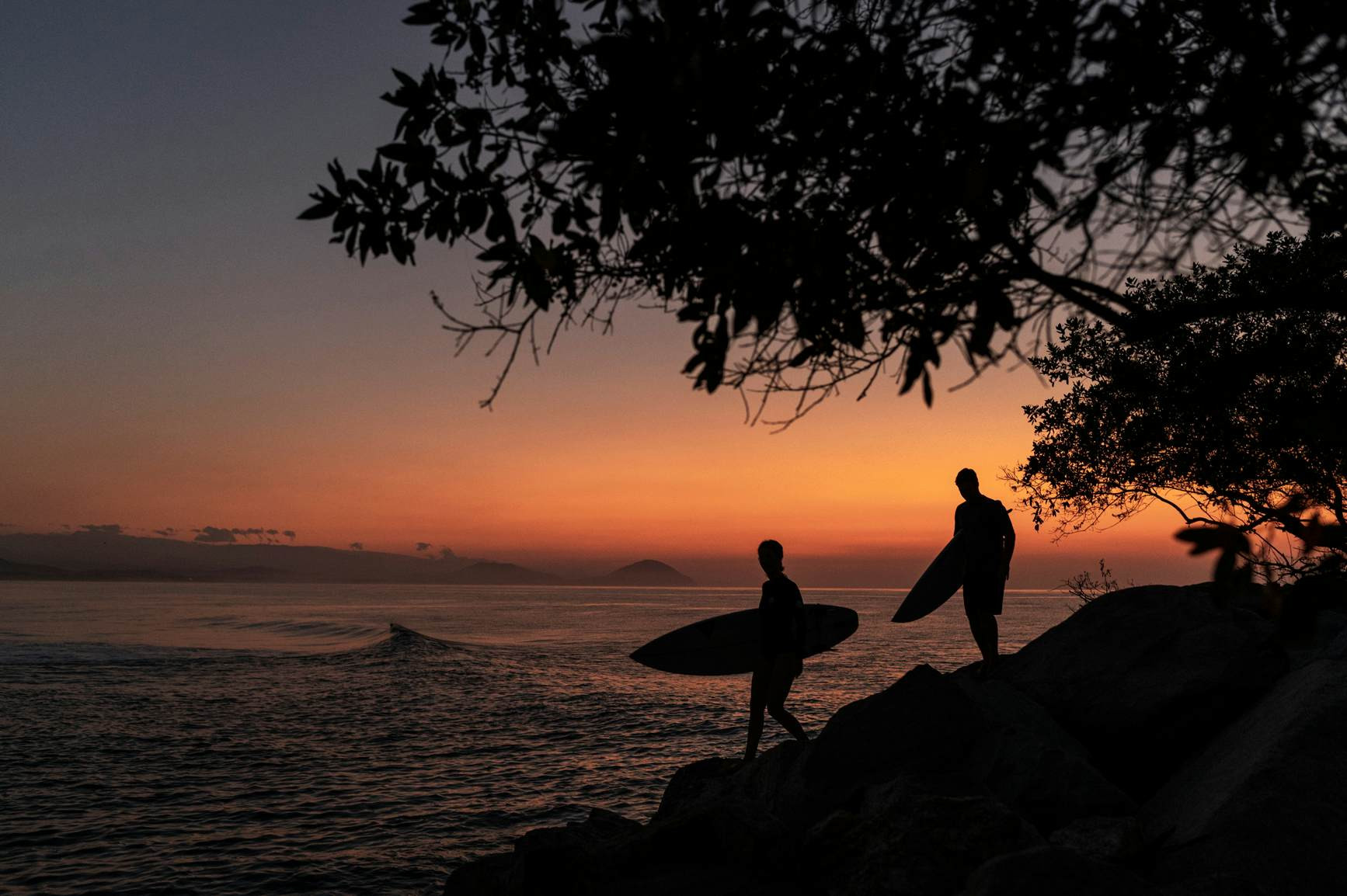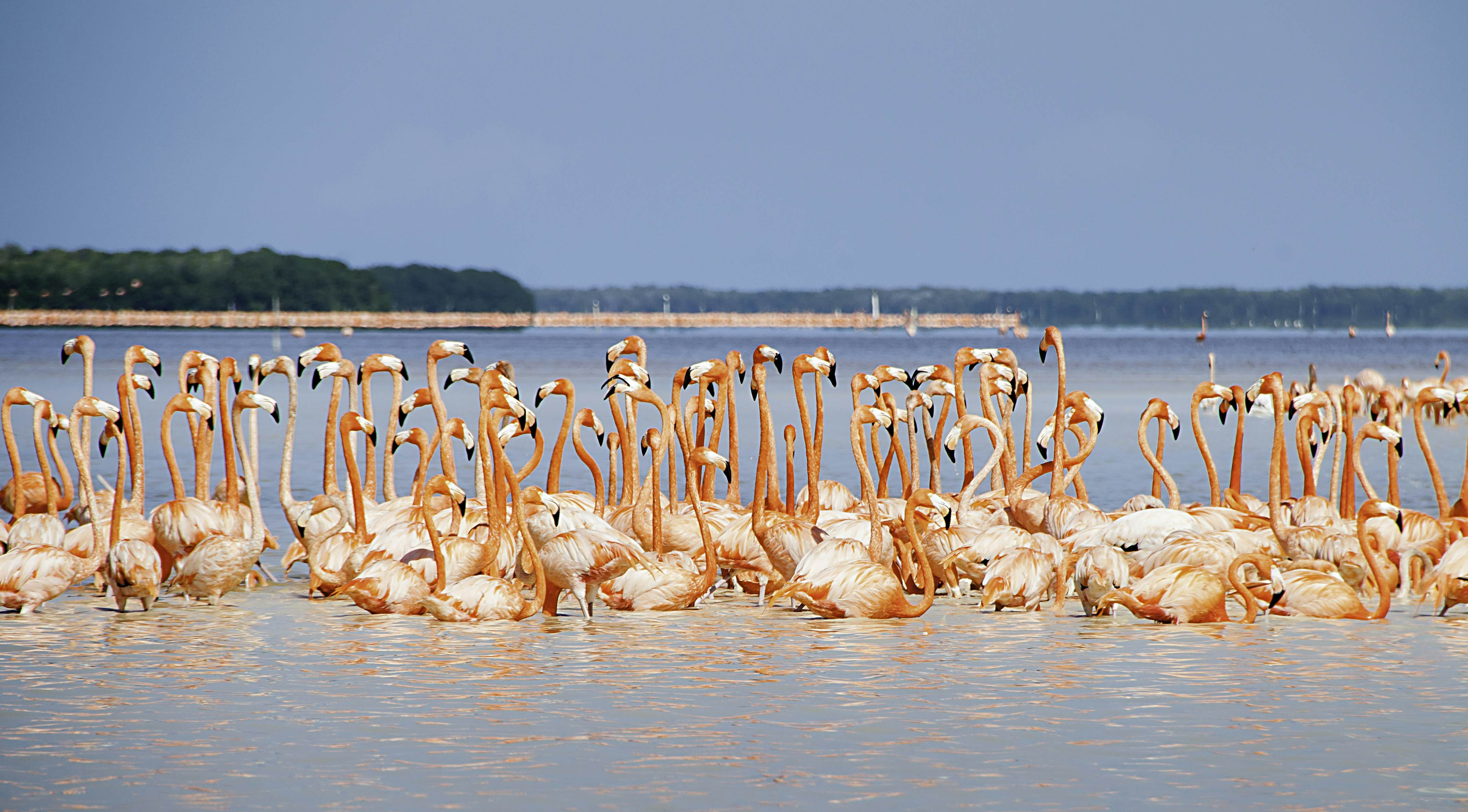Mexico, a land brimming with cultural vibrancy, historical depth, and breathtaking landscapes, is often touted as a year-round destination. While this holds true, pinpointing the best time to visit Mexico hinges on your personal preferences and what you seek from your trip. From the sun-kissed beaches of the Yucatán Peninsula to the culturally rich highlands and the adventurous Copper Canyon, Mexico offers diverse experiences throughout the year. Understanding the nuances of each season will ensure your Mexican adventure is perfectly timed for your interests.
 Snorkelers enjoying a boat tour near Isla Cozumel, Mexico
Snorkelers enjoying a boat tour near Isla Cozumel, Mexico
December to April: Ideal Weather and Festive Atmosphere
The months between December and April are widely considered the high season in Mexico, coinciding with the dry season. This period offers the most agreeable weather across much of the country, making it the Best Time To Visit Mexico for general sightseeing, outdoor activities, and enjoying the beaches. Escaping colder climates, travelers flock to Mexico during these months to soak up the sunshine and revel in the pleasant conditions.
The Baja Peninsula bursts into life during this period, with blooming flora transforming the landscapes into vibrant hues. Surfers will find exhilarating waves, while the clear waters become inviting for swimming alongside whale sharks – an unforgettable experience available from October to April. In the Northern Central Highlands, the dry weather is perfect for exploring waterfalls and rivers. Hiking enthusiasts will find Oaxaca particularly appealing during these months, with comfortable temperatures for trekking.
However, be aware that higher altitudes, such as San Cristobal de las Casas in Chiapas, can experience cooler evenings and mornings, so packing layers is advisable. The Western Central Highlands become a spectacle of nature as millions of monarch butterflies arrive at the Reserva de la Biosfera Santuario Mariposa Monarca, painting the forests orange from late October to mid-March.
Travel during November, December, and January comes with a premium, as flight prices tend to peak. Popular destinations like Tulum experience crowds, especially around New Year’s Eve and the first week of January, due to electronic music festivals and holidaymakers.
For wildlife enthusiasts, February is the prime month for whale watching around the Baja Peninsula. Culture seekers should consider March, which marks the Vernal Equinox. During this time, Chichén Itzá becomes a focal point as visitors gather to witness the serpent shadow effect on the El Castillo pyramid, a phenomenon that also occurs during the autumn equinox. Other archaeological sites like Teotihuacán near Mexico City and Guachimontones near Guadalajara also draw crowds for spring equinox celebrations.
Navigating Spring Break and Semana Santa
Spring break in March and April sees an influx of US students heading to Mexican coastal hotspots like Cancún, Puerto Vallarta, and Cabo San Lucas. These destinations become lively hubs for partying. If you prefer a quieter experience, it’s wise to be mindful of these dates as prices may increase.
Semana Santa (Easter Week), a significant holiday in Mexico, falls in either March or April. During this week, tourist areas become packed, transportation can be congested, and many businesses in inland cities may close. Similar to Christmas, travel costs can surge during Semana Santa, potentially doubling typical rates.
 Two surfers walking towards the ocean at sunset in Mexico
Two surfers walking towards the ocean at sunset in Mexico
May to June: Sunshine, Savings, and Serenity
For travelers seeking a balance of pleasant weather, fewer crowds, and more budget-friendly options, May and June present an excellent window to visit Mexico. These months fall within Mexico’s shoulder season, offering a sweet spot before the full heat and rains of summer arrive.
May sees temperatures climbing across Mexico, reaching annual highs in cities like Mérida, Guadalajara, Oaxaca City, and Mexico City. Despite the rising temperatures, the weather remains generally sunny and dry, ideal for exploring. While Cinco de Mayo is a public holiday in Mexico, celebrations are not widespread throughout the country, with Puebla being the epicenter of festivities, commemorating the historic battle against French forces.
June marks the transition into the rainy season in Mexico, and also the beginning of the hurricane season, which extends until November. While rain becomes more frequent, it often manifests as afternoon showers, leaving mornings and evenings clear. The risk of hurricanes is relatively low in June, with the highest probability occurring between August and October.
 Flamingos in Celestun Biosphere Reserve, Yucatan, Mexico
Flamingos in Celestun Biosphere Reserve, Yucatan, Mexico
July and August: Surf and Wildlife Encounters
July and August usher in the full swing of summer in Mexico, bringing hot weather across the country. Despite the heat, these months are prime time for specific interests, particularly surfing and wildlife observation.
Mexico’s Pacific coast, known as the Mexican Riviera, including destinations like Puerto Escondido, experiences excellent swells from April/May to October/November, with the largest waves typically arriving between June and August. Surfers seeking challenging breaks will find these months particularly appealing.
For wildlife enthusiasts, July and August are ideal for turtle and whale shark encounters. Puerto Vallarta becomes a haven for turtle lovers from July to December, offering opportunities to witness baby turtle releases organized by various hotels. Whale sharks congregate off the coasts of Cancún and the Riviera Maya from mid-May to mid-September, with July and August considered the best months for sightings.
However, it’s worth noting that July and August are not necessarily the best time to visit the Riviera Maya or Cancún for a general beach vacation. Besides the intense heat, many beaches in this region may experience sargassum seaweed, which can detract from the idyllic beach experience. Furthermore, these months see an increase in domestic tourism, leading to higher hotel rates in popular beach destinations. Beaches along the Mexican Riviera, however, generally remain sargassum-free.
 People celebrating Day of the Dead in Mexico
People celebrating Day of the Dead in Mexico
September to November: Cultural Immersion and Inland Exploration
The months of September to November represent the second shoulder season in Mexico and are exceptionally well-suited for cultural experiences and exploring inland destinations. As the hurricane season winds down, and the intense summer heat subsides, these months offer a comfortable climate for discovery.
September in Mexico is synonymous with patriotic fervor as the country celebrates Día de la Independencia (Independence Day). Mexican families enjoy traditional dishes like Chiles en Nogada, and lively celebrations fill the streets on the 15th and 16th of September. Guadalajara hosts the International Mariachi and Charrería Festival in September, a vibrant 10-day event showcasing mariachi music and charrería, Mexico’s national sport.
While the Yucatán Peninsula and coastal regions may still experience rain from the tail end of the hurricane season, inland Mexico enjoys milder weather. Mexico City sees some rainfall, but the overall climate is pleasant for exploring the city’s cultural and historical sites.
October, along with November and March, is considered one of the best times to explore northwest Mexico’s Copper Canyon region. Temperatures are moderate in the canyon depths and at higher elevations, making it ideal for hiking and outdoor adventures.
At the beginning of November, Día de los Muertos (Day of the Dead) takes center stage across Mexico. Cities and towns come alive with parades, elaborate altars, and all-night vigils honoring the deceased. Oaxaca City is renowned as a vibrant epicenter for Día de los Muertos celebrations, making it a particularly compelling time to visit.
Ultimately, the best time to visit Mexico truly depends on your priorities. Whether you seek sun-drenched beaches, cultural immersion, adventurous explorations, or wildlife encounters, Mexico’s diverse seasons offer something special throughout the year. By considering your interests and preferences in relation to Mexico’s seasonal variations, you can pinpoint your perfect time to experience the magic of this captivating country.